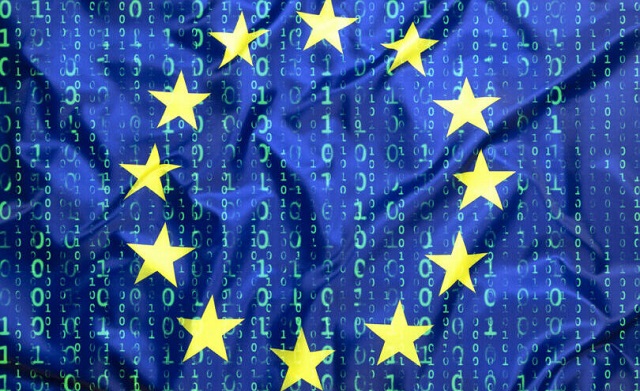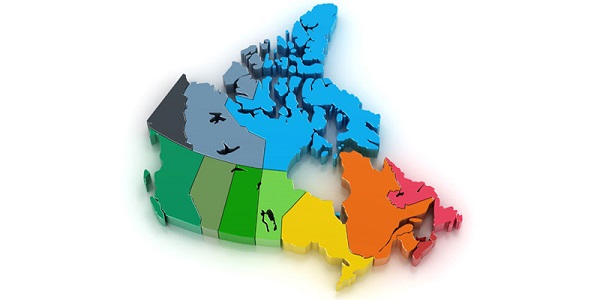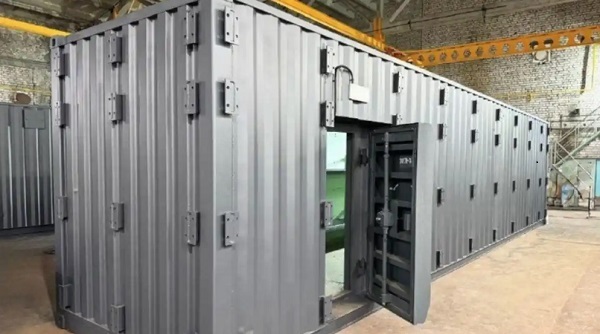Business
How the EU could combine carbon passports, digital ID, and social credit for every product

From LifeSiteNews
The European Union is going deep with its plans to introduce digital IDs across industries. Tying a form of digital ID to all products would make the introduction of carbon social credit scores easier to implement.
The concept of “carbon passports,” proposed as a measure to combat climate change, has, for a while now, raised significant concerns regarding civil liberties. These passports are designed to track an individual’s carbon footprint, including travel, energy consumption, and lifestyle choices. While their intention is to encourage environmentally friendly behaviors, they present a substantial threat to personal privacy by enabling continuous monitoring of personal activities.
This intrusion into privacy is not the only issue; carbon passports could potentially lead to discriminatory practices. Those in lower-income brackets, who often have limited access to green alternatives, might find themselves unfairly penalized. This system risks exacerbating social inequalities by disproportionately affecting those less financially equipped to make eco-friendly choices.
Furthermore, carbon passports could restrict movement and personal autonomy. Limiting travel or certain activities based on carbon usage might create a situation where only the wealthy, who can afford carbon offsets or sustainable options, maintain their freedom. This scenario paints a disturbing picture of environmental responsibility being accessible only to those with financial means.

Another concern is the centralization of power in the hands of entities controlling the carbon data. This centralization could lead to a slippery slope where tools designed for climate control evolve into instruments of more oppressive surveillance and control. The balance between addressing environmental concerns and maintaining civil liberties is delicate and crucial.
As part of the push towards carbon passports, a new idea – tying a form of digital ID to all products is also being pushed. It makes the introduction of carbon social credit scores easier to implement.
The European Union is going deep with its plans to introduce digital IDs (in this case, “digital product passports, DDPs”) across industries. DDPs specifically refer to apparel, accessories and electronics.
Brands are now starting to work on integrating the tech – that the European Commission says is necessary for the greater good of citizens, such as meeting “sustainability goals” – the so-called green deal, carbon emissions, all the things – and then there’s access to services and contactless payment.

Critics, on the other hand, say it’s simply yet another way to abuse consumers by harvesting even more of their data. The opponents’ fears appear to rely on solid facts since some of the data collected thanks to the EU’s proposed scheme will profile people based on their behavior, preferences, and even the value of their “resale profile.”
The deadline mentioned is as early as 2026 – that’s how soon brands would have to incorporate digital passports into their products.
And, don’t expect any resistance from brands. Reports are saying that they are working hard to meet the deadline of meeting what is referred to as the European Commission’s “real-world uses for digital identities.”
READ: EU claims digital ID wallet will be voluntary. India said the same before it became mandatory
On the side of the fashion industry, there will be the need to let the EU know – no longer voluntarily – about how they manufacture items, organize their supply chains, and the materials used.
Well, don’t expect brands to only implement the tech to make the EU feel good about itself. “Brands currently testing the technology are figuring out ways for it to collect customer data and add perks beyond the point of purchase,” writes Vogue Business.
Already trying to go a step above linking physical items with digital identity – as is the case with QR and NFC – and meet EU goals are the likes of Balenciaga, RealReal, and Boss, the article mentions.

And unlike that “old tech” that was there mostly to facilitate and protect transactions, manufacturers and customers, Mojito CEO Raakhee Miller had this interesting take on what’s referred to as the upcoming, “physical first” method: it “not only enhances the product’s value,” said Miller, “but also deepens consumer engagement.”
So, how deeply does the EU – and brands following its diktat – want to “engage” customers, other than people handing over money for a product they buy? This is where what’s basically data harvesting and mining comes into play, even if it is explained in fancy (and unsurprisingly, equally meaningless) terms like “phygital goods” and “metaverse approach.”
But, so to speak, the proof is in the word salad: the point is to have services and use cases “more anchored in client needs.” And clearly, to know what those needs are, one must first better know the client. Meaning, beyond what the client is currently comfortable sharing with multinational conglomerates.
Can’t we all just buy what we want, and move along? Please?
Not so fast, the EU says, and people like Vestiaire Collective VP of Partnerships Laura Escure explain it by no less than what might seem to many as basically questioning the customers’ cognitive abilities.
“The barriers around Web3 were not helping consumers to think thoroughly about luxury,” Escure is quoted.
READ: World Bank president advocates global digital ID scheme at tech summit
And did you know that if you dish out a lot of money on a luxury product, there’s a whole “story” behind it – beside the one in your bank statement? That’s how Aura Blockchain Consortium CEO Romain Carrere wants you to think about the situation.
“We believe in a future where every customer feels connected to the story behind their products, and the DPP is the key to unlocking that narrative. It’s not just a digital passport, it’s a journey of trust and empowerment for every consumer,” said Carrere.
But mostly, it would seem, it’s a narrative. There to empower itself, and those in positions of power, rather than the customer.
Back in EU’s bureaucracy, the digital product passport proposals first saw the light of day in the spring of 2022, naturally, as “sustainability” enhancing mechanisms related to products, and about a year later, this was officially presented on the European Commission website as a way to share key information about a product.
The information would be shared “across all the relevant economic actors,” a press release said in May 2023. Things are happening in this space under the Proposal for Ecodesign for Sustainable Products Regulation (ESPR).
The EU claims its goals are to boost what it calls circular economy, material and energy efficiency, and extend product lifetimes, as well as the way waste from those products is eventually handled.
The bloc also declares some grand ambitions here – like creating new business opportunities – “based on improved data access,” though.
And the EU is not above putting down consumers either, while at once working to elevate the level of data scrounged off of them. The DDP scheme, the Commission says, will “help consumers in making sustainable choices.”
And, for now – “allow authorities to verify compliance with legal obligations.”
Reprinted with permission from Reclaim The Net.
Business
Broken ‘equalization’ program bad for all provinces

From the Fraser Institute
By Alex Whalen and Tegan Hill
Back in the summer at a meeting in Halifax, several provincial premiers discussed a lawsuit meant to force the federal government to make changes to Canada’s equalization program. The suit—filed by Newfoundland and Labrador and backed by British Columbia, Saskatchewan and Alberta—effectively argues that the current formula isn’t fair. But while the question of “fairness” can be subjective, its clear the equalization program is broken.
In theory, the program equalizes the ability of provinces to deliver reasonably comparable services at a reasonably comparable level of taxation. Any province’s ability to pay is based on its “fiscal capacity”—that is, its ability to raise revenue.
This year, equalization payments will total a projected $25.3 billion with all provinces except B.C., Alberta and Saskatchewan to receive some money. Whether due to higher incomes, higher employment or other factors, these three provinces have a greater ability to collect government revenue so they will not receive equalization.
However, contrary to the intent of the program, as recently as 2021, equalization program costs increased despite a decline in the fiscal capacity of oil-producing provinces such as Alberta, Saskatchewan, and Newfoundland and Labrador. In other words, the fiscal capacity gap among provinces was shrinking, yet recipient provinces still received a larger equalization payment.
Why? Because a “fixed-growth rule,” introduced by the Harper government in 2009, ensures that payments grow roughly in line with the economy—even if the gap between richer and poorer provinces shrinks. The result? Total equalization payments (before adjusting for inflation) increased by 19 per cent between 2015/16 and 2020/21 despite the gap in fiscal capacities between provinces shrinking during this time.
Moreover, the structure of the equalization program is also causing problems, even for recipient provinces, because it generates strong disincentives to natural resource development and the resulting economic growth because the program “claws back” equalization dollars when provinces raise revenue from natural resource development. Despite some changes to reduce this problem, one study estimated that a recipient province wishing to increase its natural resource revenues by a modest 10 per cent could face up to a 97 per cent claw back in equalization payments.
Put simply, provinces that generally do not receive equalization such as Alberta, B.C. and Saskatchewan have been punished for developing their resources, whereas recipient provinces such as Quebec and in the Maritimes have been rewarded for not developing theirs.
Finally, the current program design also encourages recipient provinces to maintain high personal and business income tax rates. While higher tax rates can reduce the incentive to work, invest and be productive, they also raise the national standard average tax rate, which is used in the equalization allocation formula. Therefore, provinces are incentivized to maintain high and economically damaging tax rates to maximize equalization payments.
Unless premiers push for reforms that will improve economic incentives and contain program costs, all provinces—recipient and non-recipient—will suffer the consequences.
Authors:
Alberta
Alberta’s fiscal update projects budget surplus, but fiscal fortunes could quickly turn

From the Fraser Institute
By Tegan Hill
According to the recent mid-year update tabled Thursday, the Smith government projects a $4.6 billion surplus in 2024/25, up from the $2.9 billion surplus projected just a few months ago. Despite the good news, Premier Smith must reduce spending to avoid budget deficits.
The fiscal update projects resource revenue of $20.3 billion in 2024/25. Today’s relatively high—but very volatile—resource revenue (including oil and gas royalties) is helping finance today’s spending and maintain a balanced budget. But it will not last forever.
For perspective, in just the last decade the Alberta government’s annual resource revenue has been as low as $2.8 billion (2015/16) and as high as $25.2 billion (2022/23).
And while the resource revenue rollercoaster is currently in Alberta’s favor, Finance Minister Nate Horner acknowledges that “risks are on the rise” as oil prices have dropped considerably and forecasters are projecting downward pressure on prices—all of which impacts resource revenue.
In fact, the government’s own estimates show a $1 change in oil prices results in an estimated $630 million revenue swing. So while the Smith government plans to maintain a surplus in 2024/25, a small change in oil prices could quickly plunge Alberta back into deficit. Premier Smith has warned that her government may fall into a budget deficit this fiscal year.
This should come as no surprise. Alberta’s been on the resource revenue rollercoaster for decades. Successive governments have increased spending during the good times of high resource revenue, but failed to rein in spending when resource revenues fell.
Previous research has shown that, in Alberta, a $1 increase in resource revenue is associated with an estimated 56-cent increase in program spending the following fiscal year (on a per-person, inflation-adjusted basis). However, a decline in resource revenue is not similarly associated with a reduction in program spending. This pattern has led to historically high levels of government spending—and budget deficits—even in more recent years.
Consider this: If this fiscal year the Smith government received an average level of resource revenue (based on levels over the last 10 years), it would receive approximately $13,000 per Albertan. Yet the government plans to spend nearly $15,000 per Albertan this fiscal year (after adjusting for inflation). That’s a huge gap of roughly $2,000—and it means the government is continuing to take big risks with the provincial budget.
Of course, if the government falls back into deficit there are implications for everyday Albertans.
When the government runs a deficit, it accumulates debt, which Albertans must pay to service. In 2024/25, the government’s debt interest payments will cost each Albertan nearly $650. That’s largely because, despite running surpluses over the last few years, Albertans are still paying for debt accumulated during the most recent string of deficits from 2008/09 to 2020/21 (excluding 2014/15), which only ended when the government enjoyed an unexpected windfall in resource revenue in 2021/22.
According to Thursday’s mid-year fiscal update, Alberta’s finances continue to be at risk. To avoid deficits, the Smith government should meaningfully reduce spending so that it’s aligned with more reliable, stable levels of revenue.
Author:
-

 ESG2 days ago
ESG2 days agoCan’t afford Rent? Groceries for your kids? Trudeau says suck it up and pay the tax!
-

 John Stossel2 days ago
John Stossel2 days agoGreen Energy Needs Minerals, Yet America Blocks New Mines
-

 Daily Caller2 days ago
Daily Caller2 days agoLos Angeles Passes ‘Sanctuary City’ Ordinance In Wake Of Trump’s Deportation Plan
-

 Alberta2 days ago
Alberta2 days agoProvince considering new Red Deer River reservoir east of Red Deer
-

 Addictions2 days ago
Addictions2 days agoBC Addictions Expert Questions Ties Between Safer Supply Advocates and For-Profit Companies
-

 Aristotle Foundation1 day ago
Aristotle Foundation1 day agoToronto cancels history, again: The irony and injustice of renaming Yonge-Dundas Square to Sankofa Square
-

 armed forces1 day ago
armed forces1 day agoJudge dismisses Canadian military personnel’s lawsuit against COVID shot mandate
-

 conflict2 days ago
conflict2 days agoPutin Launches Mass-Production of Nuclear Shelters for his People






